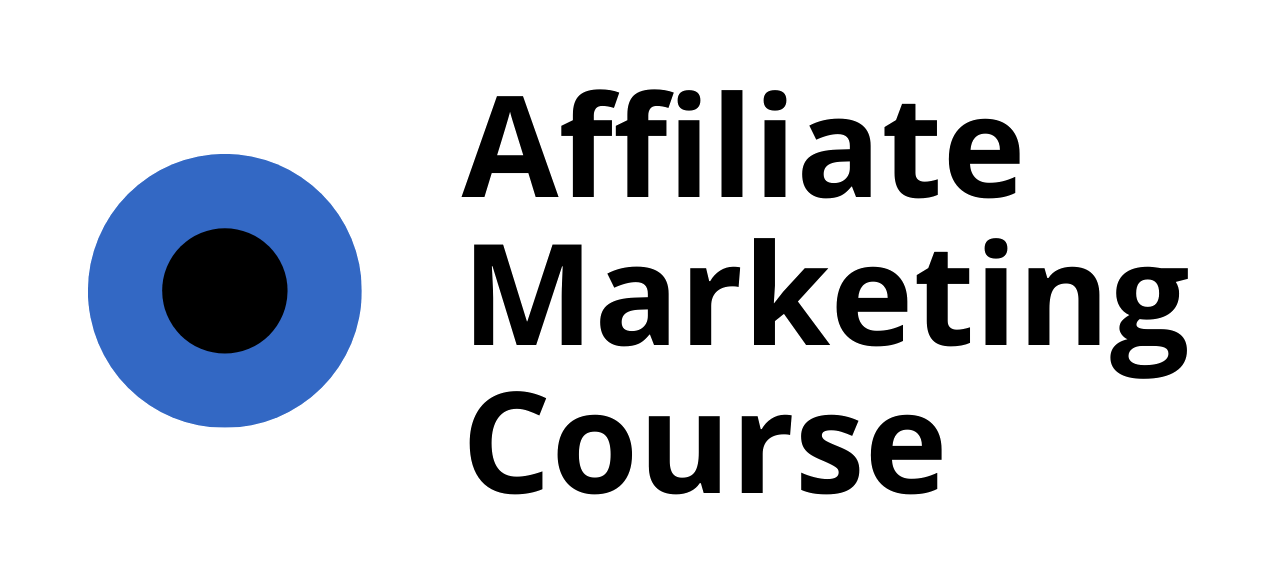Exploring the world of affiliate marketing can be an exciting journey, especially if you’re just starting out. For beginners, the prospect of earning income through affiliate marketing seems appealing, but it can also feel overwhelming with so many strategies, programs, and resources to consider. Whether you’re curious about how to teach yourself affiliate marketing, wondering if you can make $100 a day with it, or seeking the best affiliate marketing training for beginners, this comprehensive guide aims to walk you through everything you need to know. From understanding the basics to exploring free affiliate marketing training opportunities, this article will provide you with actionable insights and practical advice to kickstart your affiliate marketing journey. By addressing key questions like how much money is required to start and how to build a network without initial funds, this guide ensures you’re well-prepared to navigate the complexities of affiliate marketing with confidence and clarity. Let’s dive into the essential tips and strategies that will help you ignite your affiliate marketing success and achieve your financial goals.
Key Takeaways
– Affiliate Marketing is Accessible: You can learn affiliate marketing for free with the right strategies and resources.
– Free Resources Exist: Utilize online courses, guides, and communities to kickstart your affiliate marketing journey.
– Build an Audience: Focus on content creation and social media to grow your audience and influence.
– Track Progress Effectively: Use free tools like Google Analytics to monitor performance and refine your strategy.
– Join Support Networks: Engage with communities and forums to gain insights and tips from experienced marketers.
– Choose Reputable Programs: Research affiliate programs carefully to ensure alignment with your niche and goals.
– Leverage Email Marketing: Build a list and use incentives to drive traffic to your affiliate links.
– Stay Compliant: Adhere to legal guidelines like FTC rules to maintain trust with your audience.
– Start Small and Scale Gradually: Even without funds, focus on organic growth, content quality, and ethical practices.
– Use Free Tools: Minimize costs by leveraging free hosting, email services, and design tools.

Teaching Yourself Affiliate Marketing: A Step-by-Step Guide
Starting affiliate marketing can seem daunting, but with a well-structured approach, you can navigate the process effectively. Here’s a comprehensive guide to help you get started:
1. Choose Your Platform
Decide where you’ll showcase your affiliate links. Options include:
- Blogging platforms like WordPress
- Social media accounts (Instagram, TikTok, Pinterest)
- YouTube channels
2. Select Your Niche
Pick a niche you’re passionate about. Start broad and refine as you gain insight. Popular niches include:
- Fashion and beauty
- Tech gadgets
- Health and wellness
3. Join Affiliate Programs
Sign up for reputable affiliate networks:
- Amazon Associates
- ShareASale
- eBay Partner Program
4. Create Compelling Content
Develop content around the products you promote. Types of content include:
- Blog posts and product reviews
- YouTube product demonstrations
- Informative social media posts
5. Optimize for SEO
Use SEO tools to enhance your content’s visibility. Consider:
- SEO plugins for WordPress
- Free SEO tools like Ubersuggest
- Keyword research using Google Keyword Planner
6. Build an Email List
Collect emails by offering incentives like:
- Discount codes
- Free downloadable resources
- Exclusive content or guides
7. Engage on Social Media
Post consistently and interact with your audience. Strategies include:
- Posting 3 times weekly
- Mixing promotional and informative content
- Engaging in discussions
8. Track Performance
Monitor success using analytics tools like Google Analytics. Key metrics include:
- Traffic sources
- Conversion rates
- Average order value
9. Stay Updated
Keep abreast of industry trends by:
- Following niche influencers
- Subscribing to newsletters
- Setting aside weekly review time
10. Comply with Legal Requirements
Ensure transparency with disclaimers and adhere to tax obligations. Include disclaimers in:
- Blog posts
- Social media bios
11. Monetize Gradually
Build trust before seeking conversions. Start with organic promotion and gradually introduce paid ads.
12. Plan and Execute
Create a manageable plan, tackling one task at a time. Use tools like WordPress for blogging and Google Analytics for monitoring. Stay motivated and adjust strategies based on feedback and performance data.
By following these steps, you can systematically build your affiliate marketing skills and achieve your goals. Remember, persistence and adaptability are key to long-term success.
Can You Make $100 a Day with Affiliate Marketing?
Yes, it is possible to earn $100 a day through affiliate marketing with consistent effort and the right strategies. Below are proven methods to achieve this goal:
1. Understand the Basics of Affiliate Marketing
Affiliate marketing involves promoting products or services and earning a commission for each sale made through your unique referral link. To succeed, you need to choose the right affiliate programs, drive targeted traffic, and convert that traffic into sales.
2. Key Strategies to Earn $100 Daily
a. Build a Strong Traffic Source
- Social Media Platforms : Promote affiliate links on platforms like Instagram, Pinterest, and TikTok where visual content performs well.
- Email Marketing : Build an email list and send regular newsletters with affiliate offers.
- Content Creation : Create valuable content around trending topics in your niche to attract organic traffic.
b. Choose the Right Affiliate Programs
- High-Commission Programs : Look for affiliate networks offering competitive commissions, such as Amazon Associates, ClickBank, and ShareASale.
- Niche-Specific Programs : Join programs tailored to your audience’s interests to maximize conversion rates.
c. Optimize Your Landing Pages
- Clear Call-to-Actions : Use persuasive CTAs like “Get Started Now” or “Shop Today.”
- Trust Signals : Include trust badges and reviews to build credibility.
- Mobile Optimization : Ensure your landing pages are mobile-friendly since many users shop on their phones.
d. Leverage Social Proof
- Customer Testimonials : Showcase real customer reviews and success stories to build trust.
- Influencer Partnerships : Collaborate with influencers in your niche to reach a broader audience.
e. Use Paid Advertising
- Google Ads : Target high-intent keywords to drive traffic to your affiliate links.
- Facebook Ads : Create targeted campaigns based on demographics and interests.
f. Stay Updated with Trends
- SEO Best Practices : Optimize your content for search engines to increase visibility.
- Trending Topics : Align your content with current trends to capture attention.
3. Tools and Resources
- Affiliate Marketing Courses : Take courses like AffiliateMarketingCourse.biz to master the skills.
- Analytics Tools : Track your performance with tools like Google Analytics and SEMrush to identify areas for improvement.
By implementing these strategies and continuously refining your approach, you can consistently earn $100 a day or more through affiliate marketing.

Which Affiliate Marketing Program Is Best For Beginners?
When choosing an affiliate marketing program for beginners, it’s crucial to select one that offers simplicity, low barriers to entry, and robust support systems. Here are some of the top options:
- Amazon Associates : Known for its ease of use, Amazon Associates is a great starting point for newcomers. It offers a vast selection of products, a user-friendly interface, and no upfront costs. Sign-up is quick, making it accessible for anyone looking to dip their toes into affiliate marketing.
- ShareASale : This program stands out for its diverse range of niches and flexible commission structures. While the approval process may be slightly more involved, ShareASale provides excellent resources and support for new affiliates aiming to succeed.
- ClickBank : Specializing in digital products, ClickBank is ideal for those interested in promoting downloadable content. Its competitive nature requires some research, but it offers high commissions and a user-friendly platform.
- Ebay Partner Network : Perfect for those already familiar with selling products, Ebay’s program allows affiliates to earn commissions on a wide array of items. It requires understanding the platform’s mechanics but offers significant earning potential.
Each program has unique strengths, so the best choice ultimately depends on your personal interests and goals. Explore each option to find the one that aligns best with your skills and aspirations.

Can I Learn Affiliate Marketing for Free?
Yes, you can definitely learn affiliate marketing for free with the right approach and resources. Here’s a structured guide to help you get started:
1. Understand the Basics
- Definition : Affiliate marketing involves promoting products or services and earning a commission from sales made through your unique links.
- No Technical Skills Required : While having a website helps, you can start by sharing content on social media or blogs.
2. Explore Free Resources
- Online Courses : Platforms like Google Digital Garage and HubSpot Academy offer free courses on digital marketing, which cover affiliate marketing basics.
- Guides and eBooks : Look for free resources on platforms like Medium and Reddit. Guides often provide step-by-step instructions and real-life examples.
3. Build an Audience
- Content Creation : Start a blog or YouTube channel focused on topics you’re passionate about. Share product reviews and tutorials.
- Social Media : Use platforms like Instagram and Pinterest for visual content, showcasing products effectively.
4. Track Progress
- Tools : Use free tools like Google Analytics and UTM parameters to track your affiliate links and measure performance without initial costs.
5. Join Communities
- Support Networks : Engage with communities on Facebook groups and forums like Quora to gain insights and tips from experienced marketers.
6. Choose the Right Programs
- Research : Look for top-rated affiliate programs, comparing factors like commission rates and terms. Read reviews to ensure you select reputable programs.
7. Leverage Email Marketing
- Build a List : Offer incentives like free eBooks to encourage email sign-ups, driving traffic to your affiliate links.
8. Stay Updated on Legal Requirements
- Compliance : Familiarize yourself with FTC guidelines to maintain transparency and trust with your audience.
By following these steps, you can effectively learn affiliate marketing for free, leveraging available resources and community support to grow your skills and success.
How Much Money Is Required to Start Affiliate Marketing?
Starting affiliate marketing typically involves both initial setup costs and ongoing expenses. Here’s a breakdown:
- Initial Setup Costs :
- Domain and Hosting : Approximately $100 to $200 annually for a reliable domain and hosting service.
- Website Development : Costs vary based on the platform and complexity. Using platforms like WordPress with themes and plugins can range from $0 to several hundred dollars.
- Content Creation Tools : Investment in tools like Canva, Photoshop, or video editing software can add $100 to $300 annually.
- Ongoing Expenses :
- Traffic Generation : Promoting affiliate links often requires budgeting for ads. Platforms like Google Ads, Facebook Ads, or Instagram Ads can range from $500 to several thousand dollars monthly.
- Content Creation : Continuous content development may require hiring writers or using AI tools, adding $200 to $600 monthly.
- Competitor Strategies : Engaging in paid promotions or influencer collaborations can incur additional costs, varying from $300 to $1500 monthly.
- Hidden Costs :
- Affiliate Network Fees : Some networks charge fees based on earnings, which can reduce profit margins.
- Transaction Fees : Payment processing fees for affiliate sales can range from 5% to 30%.
While some affiliate programs have no upfront costs, success often requires investment in traffic generation and content creation. The total expenses can vary widely, from low-cost options for casual marketers to substantial investments for scaling operations.

How to Start Affiliate Marketing with No Money
Starting an affiliate marketing career without initial capital requires creativity and resourcefulness. Here’s a step-by-step guide to help you begin:
1. Leverage Free Platforms
- Blogging: Use free platforms like WordPress.com to create a blog focused on a specific niche. Share tips, tutorials, and insights about affiliate marketing to attract an audience.
- Social Media: Build a presence on platforms like Instagram, TikTok, or YouTube. Post content that educates viewers and establishes you as an authority in your niche.
2. Choose a Niche
- Select a niche you’re passionate about. Focus on a specific area, such as tech gadgets, health, or finance, to target a dedicated audience. Research affiliate programs like Amazon Associates, ShareASale, and ClickBank that align with your niche.
3. Create Valuable Content
- Develop high-quality, original content in various formats: articles, videos, podcasts, or webinars. Offer unique insights by interviewing other affiliates or sharing success stories. Consider creating a free eBook or guide as a lead magnet to grow your email list.
4. Apply for Affiliate Programs
- Once your audience grows, apply to affiliate programs. Ensure your content meets their approval criteria, focusing on originality and expertise. Review commission rates and terms carefully before applying.
5. Drive Traffic Organically
- Optimize your content with keywords using free SEO tools. Build backlinks through guest posting, collaborations, or partnerships. Engage with your audience on social media and forums. Utilize email marketing to keep your audience informed and interested.
6. Track Performance
- Use analytics tools like Google Analytics and affiliate tracking software to monitor traffic, conversions, and earnings. Adjust your strategy based on performance data to enhance results.
7. Stay Updated and Network
- Keep abreast of affiliate marketing trends by subscribing to newsletters, following industry leaders, and joining online communities. Network with other affiliates for support and opportunities.
8. Build Relationships with Networks
- Reach out to affiliate network program managers directly. Maintain professionalism and consistency in your communications to increase acceptance chances.
9. Adhere to Ethical Standards
- Always disclose affiliate links honestly to preserve trust with your audience. Ensure your promotions are truthful and not misleading.
10. Be Patient and Persistent
- Understand that building a successful affiliate business requires time. Stay committed to continuous learning and adaptation to achieve long-term growth.
Leverage Free Tools
- Use free hosting, email services, and design templates to minimize costs. Focus on evergreen content to ensure ongoing value and engagement.
By following these steps, you can establish a strong foundation for your affiliate marketing journey, even without initial financial investment.




0 Comments